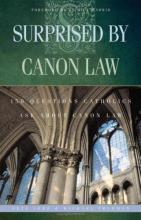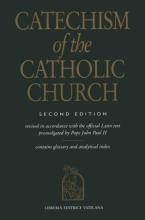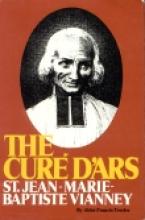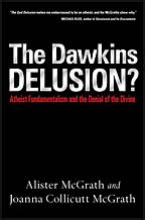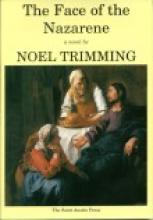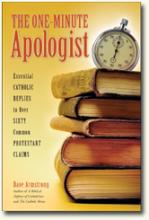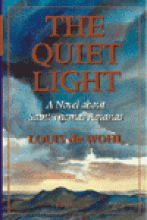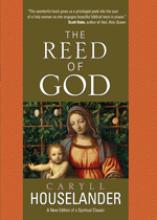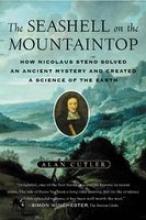Religion High School
Surprised by Canon Law
Pete and Michael are Canon Lawyers for the Catholic Church. This means they answer lots of questions about the rules that guide our faith. Canon law in many instances determines how theological truths apply to the daily practice of the Catholic faith.
This book gives a good introductory look at canon law. From the basic, "What is canon law all about?" to the more obscure, "What relationship does a Catholic association have with the larger church?" this book will give you a good, basic concept of what canon law is, and what canon lawyers do.
There are fourteen chapters, starting with general questions, and moving to specific questions and covering all of the sacraments. There is a handy index in the back for looking things up. I found the chapter on the role of priests and the structure of the parish very interesting.
Overall, this is a good, basic introductory look at canon law for people who are curious as to what canon law means, what it can and cannot do, and when a canon lawyer may help them in a certain situation.
This book would be very useful to give to the high school student as a supplement to the religion program you are using. Most high school students have probably not heard of canon law, and this book will give them a basic understanding of the inner workings of the church in this regard. The material is certainly understandable for most 13 and older students.
The Catechism of the Catholic Church: Second Edition
This beautiful new Catechism is truly a gift and a treasure in an era when "new" so often means "bad." Although I have not yet read every word of it (it's quite a big book!) I have had the pleasure of leading Catechism study groups for mothers and found much success in using this text to help some who were previously very lukewarm in their faith to better understand not only what the Catholic Church really teaches, but why these teachings make sense - yes, even in our modern world!
The Catechism is divided into four main sections. The First, the Profession of Faith, covers the basic beliefs and dogmas of the Church - based upon the Creed. Part Two, "The Celebration of the Christian Mystery", discusses liturgy and the Sacraments. Part Three, "Life in Christ", covers moral life - particularly in light of the Beatitudes and the Ten Commandments. Part Four is on Christian Prayer.
The text is both difficult and joyful to read. It is difficult (in some places) because of the unfamiliar vocabulary - catechesis, pedagogy, asceticism, fecundity - these are not part of our every day vocabulary (although many should be learned by high schoolers). Even so, the new edition has an in-depth glossary in the back and these more unfamiliar words come up once every few paragraphs rather than every other sentence. It is joyful to read because it is so rich, so beautiful, so true. Throughout the text, the reader is referred to Sacred Scripture, Church documents and the writings of the Saints. An additional volume The Companion to the Catechism of the Catholic Church, published by Ignatius Press, provides the text from all of the footnotes for easy reference and further study.
A few sample passages:
(407) "The doctrine of original sin, closely connected with that of redemption by Christ, provides lucid discernment of man's situation and activity in the world. By our first parents' sin, the devil has acquired a certain domination over man, even though man remains free. Original sin entails 'captivity under the power of him who thenceforth had the power of death, that is, the devil.' Ignorance of the fact that man has a wounded nature inclined to evil gives rise to serious errors in the areas of education, politics, social action and morals."
(1395) "By the same charity that it enkindles in us, the Eucharist preserves us from future mortal sins. The more we share the life of Christ and progress in his friendship, the more difficult it is to break away from him by mortal sin. The Eucharist is not ordered to the forgiveness of mortal sins - that is proper to the sacrament of Reconciliation. The Eucharist is properly the sacrament of those who are in full communion with the Church."
(2521) "Purity requires modesty, an integral part of temperance. Modesty protects the intimate center of the person. It means refusing to unveil what should remain hidden. It is ordered to chastity to whose sensitivity it bears witness. It guides how one looks at others and behaves toward them in conformity with the dignity of persons and their solidarity."
(2712) "Contemplative prayer is the prayer of the child of God, of the forgiven sinner who agrees to welcome the love by which he is loved and who wants to respond to it by loving even more. But he knows that the love he is returning is poured out by the Spirit in his heart, for everything is grace from God. Contemplative prayer is the poor and humble surrender to the loving will of the Father in ever deeper union with his beloved Son."
Many beautiful writings of the Saints are included (in addition to those which are merely footnoted), such as this passage from St. Ignatius of Loyola (taken from the Spiritual Exercises):
"Every good Christian ought to be more ready to give a favorable interpretation to another's statement than to condemn it. But if he cannot do so, let him ask how the other understands it. And if the latter understands it badly, let the former correct him with love. If that does not suffice, let the Christian try all suitable ways to bring the other to a correct interpretation so that he may be saved."
This book belongs in every Catholic home. It should be read over, and prayed over, and cried over, and smiled over often.
The Cure D'Ars
This book also bears a special recommendation from Pope John Paul II and had a substantial influence on his life. He had this to say about St. John Vianney and this particular book in his own book Gift and Mystery: On the Fiftieth Anniversary of My Priestly Ordination...
"With great emotion I visited the little old church where Saint John Vianney heard confessions, taught catechism, and gave his homilies. It was an unforgettable experience for me. From my seminary years I had been impressed by the figure of the Cure d'Ars, especially after reading his biography by Monsignor Trochu. Saint John Marie Vianney astonishes us because in him we can see the power of grace working through human limitations. It was his heroic service in the confessional which particularly struck me. That humble priest, who would hear confessions more than ten hours a day, eating little and sleeping only a few hours, was able, at a difficult moment in history, to inspire a kind of spiritual revolution in France..." (pp. 57, Gift and Mystery by Pope John Paul II)
The Dawkins Delusion?
This would be an ideal resource for the student heading off to a secular college, who may encounter those who will attack his Christian beliefs based on atheistic notions.
The Face of the Nazarene
As the story unfolds, we see the powerful influence of "the Master" upon his devoted friends - especially Judah, the headstrong young charge/apprentice to Lazarus. Judah and his friends are gravely concerned about the plottings of Jesus' enemies and they desperately wish to do something to protect him. The story helps to give us a very real sense of their helplessness and sorrow as they watched His Passion and death unfold. Mary's sorrow and faith during this difficult time are also very beautifully rendered. The reader, who has experienced the sorrow of the Passion with Jesus' friends will also rejoice all the more with them at His Resurrection
The One-Minute Apologist
The Quiet Light
The dust jacket reads that the "theme of this novel was suggested to Louis de Wohl, in a private audience, by His Holiness, Pope Pius XII in 1948". The Quiet Light was printed two years later.
The book tells the story of the life of Thomas Aquinas from the eyes of his family members. It is a well-written novel, with an exciting plot and a complement of well-rounded characters. We see Thomas Aquinas as a shy, and supposedly dull-witted, schoolboy who earns himself the name of "The Dumb Ox". It isn't until college that his legendary genius is revealed. We learn how Thomas's wealthy family are terribly opposed to his decision to become a Dominican, and of their many attempts to thwart his personal plan. The author makes Saint Thomas Aquinas come alive, and we are left with a deep impression of the impact that this saint made in his time.
The novel is also noteworthy for its historical content. It is a wonderful case study of life in the thirteenth century in Europe. We learn of feuding barons, fleeing popes, politically-motivated marriages, chivalry, feasting, the crusades, and life in a monastary.
Most importantly, this is a Catholic novel. We are touched by the depth of the faith of St. Thomas Aquinas, and awe-struck by the miracles that occur later in his life.
For highschoolers studying the Middle Ages, or anyone who wants to learn more about this important saint, The Quiet Light is highly recommended.
The Reed of God
Sometimes it may seem to us that there is no purpose in our lives, that going day after day for years to this office or that school or factory is nothing else but waste and weariness. But it may be that God has sent us there because but for us Christ would not be there. If our being there means that Christ is there, that alone makes it worthwhile. (pg. 60)
We must be swift to obey the winged impulses of His Love, carrying Him to wherever He longs to be; and those who recognise His presence will be stirred, like Elizabeth with new life. They will know His presence, not by any special beauty or power shown by us, but in the way that the bud knows the presence of the light, by an unfolding in themselves, a putting forth of their own beauty. It seems that this is Christ’s favourite way of being recognised, that He prefers to be known, not by His own human features, but by the quickening of His own life int he heart, which is the response to His coming. (pgs. 62-63)
If such is the beauty of the world to ordinary children, what must it have been to the Mother of God, when her whole being was folded upon the unborn Christ within her? He was completely her own, utterly dependent upon her: she was His food and warmth and rest, His shelter from the world, His shade in the Sun. She was the shrine of the Sacrament, the four walls and the roof of His home. Yet she must have longed to hold Him between her hands and to look into His human face and to see in it, in the face of God, a family likeness to herself Think of that! But perhaps you cannot, unless you happen to be a young priest newly ordained, waiting for the moment when you will hold in your hands the first Host that you have consecrated at your first Mass. … Each work of her hands prepared His hands a little more for the nails; each breath that she drew counted one more to His last. In giving life to Him she was giving Him death. All other children born must inevitably die; death belongs to fallen nature; the mother’s gift to the child is life. But Christ is life; death did not belong to Him. In fact, unless Mary would give Him death, He could not die. Unless she would give Him the capacity for suffering, He could not suffer. He could only feel cold and hunger and thirst if she gave Him her vulnerability to cold and hunger and thirst. He could not know the indifference of friends or treachery or the bitterness of being betrayed unless she gave Him a human mind and a human heart. That is what it meant to Mary to give human nature to God. He was invulnerable; He asked her for a body to be wounded. He was joy itself; He asked her to give Him tears. He was God; He asked her to make Him man. He asked for hands and feet to be nailed. He asked for flesh to be scourged. He asked for blood to be shed. He asked for a heart to be broken. (pgs. 72-73)
If Christ is formed of our lives, it means that He will suffer in us. Or, more truly, we will suffer in Him. “And He was made man.” Our Lady saw at once what was meant in her case: supernaturally, He was made herself. If He is made man in you, He will be made you; in me, me. It is extremely difficult to lay hold of this fact. It is very hard not to think of a kind of mystical Christ just beside us, or just in front of us, suffering with infinite patience and joy, being obedient, humble, persevering, fulfilling His Father’s will. It is really difficult to realise that if He is formed in our life we are not beside Him but in Him; and what He asks of us is to realise that it is actually in what we do that He wants to act and to suffer. (pgs. 76-77)I read this on retreat about a month ago (a silent, Ignatian retreat and my first retreat in 20 years – it was wonderful!) because my spiritual director had recommended it and I loved how perfectly it tied into the talks on the spiritual exercises and the book I happened to be reading alongside it – Does Jesus Know Us? Do We Know Him? by Hans Urs Von Balthasar.

